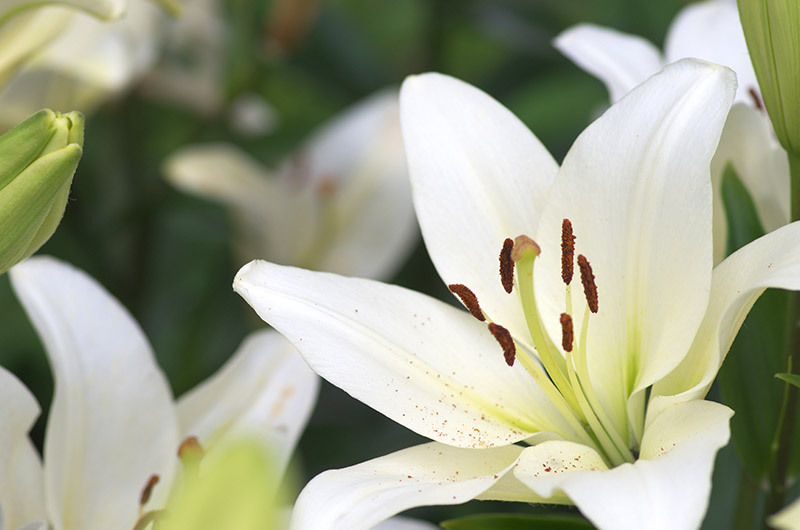Your Orchid Care Essentials
Posted on 18/08/2025
Your Orchid Care Essentials: The Ultimate Guide for Healthy Orchids
Orchids are renowned for their stunning beauty and alluring blooms, captivating plant enthusiasts around the world. Though they may seem exotic and delicate, many orchid species are surprisingly resilient when they receive the right care. In this comprehensive article, discover orchid care essentials--expert tips and detailed guidance to help your orchids thrive indoors or out. Whether you are a beginner or a seasoned plant parent, follow these best practices for lush foliage, vibrant flowers, and long-lasting plant health.
Understanding Your Orchid
Before delving into orchid care basics, it's vital to recognize that the word "orchid" refers to a diverse and widespread family of flowering plants (Orchidaceae) with over 25,000 species and many more hybrids. The phalaenopsis (moth orchid), cattleya, dendrobium, and oncidium are among the most popular varieties kept as potted houseplants. While their needs overlap, each type has unique features and care requirements. Always identify your orchid for optimal orchid management!
- Phalaenopsis: Ideal for beginners, blooms last for months
- Dendrobium: Upright canes with clustered flowers
- Cattleya: Large, fragrant blossoms; needs bright light
- Oncidium: "Dancing lady" blooms, loves humidity

Choosing the Best Orchid Location
Location is one of the most critical orchid care essentials. Orchids do not tolerate direct sunlight for prolonged periods, nor do they thrive in dark corners. Choose a spot with strong, indirect sunlight--an east- or west-facing window is perfect for most varieties. Too little light discourages blooming, while too much can scorch the leaves.
- Check the color of the leaves: Healthy orchid leaves are bright green. Dark green means not enough light; reddish tinge means too much sun.
- Rotate the plant regularly to ensure even exposure.
- If natural light is insufficient (especially in winter), supplement with grow lights.
Watering Orchids: The Art and Science
Watering is often where many orchid owners stumble. Overwatering kills more orchids than under-watering! Because most orchids are epiphytes (air plants) in nature, their roots like to breathe and hate soggy conditions. Here's how to master this essential part of orchid plant care:
- Water only when needed. Insert your finger into the potting mix. If it feels dry about an inch down, it's time to water.
- Don't follow a strict schedule like "every Sunday." Your orchid's water needs may change with the seasons, temperature, and humidity.
- *Use room-temperature, filtered or distilled water to avoid mineral build-up.
- Let water drain freely from the pot; never let your orchid sit in standing water.
- Misting can increase humidity, but never drench the leaves or crown, as this encourages rot.
Quick tip: Phalaenopsis orchids generally need watering every 7 to 10 days, but always check the potting mix moisture before watering.
Humidity: Creating an Orchid Oasis
Humidity is a core orchid care essential. Most orchids originate from tropical and subtropical regions with consistent humidity--ideally, between 40 and 70 percent.
- Group orchids together to create a microclimate with higher humidity.
- Set orchid pots on a humidity tray: Fill a shallow dish with pebbles and water, and set pots atop the pebbles. Never let the plants sit in water!
- Use a room humidifier in drier climates, especially in winter.
- Mist the air around your orchids, not the plants directly.
Choosing the Perfect Orchid Potting Mix
Unlike typical houseplants, orchids do not grow well in soil. Their roots crave air and fast drainage. Select a special orchid mix to ensure proper root health:
- Bark-based mixes: Suited for Phalaenopsis and Cattleya; offers excellent airflow and drainage.
- Sphagnum moss: Retains more moisture, great for Dendrobiums and for orchid seedlings.
- Other ingredients: Charcoal, coconut husk, and perlite often appear in commercial blends for their moisture and aeration qualities.
- Repot every 1-2 years to refresh the growing medium and allow for healthy root growth.
How to Repot an Orchid
- Gently remove the orchid from its old pot and shake off the old mix.
- Trim away any dead or rotting roots with sterilized scissors.
- Place the orchid in the center of a new pot and add your chosen orchid mix around the roots.
- Water lightly and let the plant adjust to its new home.
Lighting Essentials for Orchid Care
Proper light is vital for orchid blooming and growth. If natural sunshine is limited in your home, consider supplementing with artificial lighting. Choose full-spectrum LED or fluorescent grow lights mounted about 12-24 inches above your orchids.
- Phalaenopsis care: Bright, indirect light; avoid direct midday sun.
- Cattleya and Dendrobium orchids: Need stronger light and may tolerate some direct sun (not the hottest midday rays).
- Oncidium orchids also require ample light--watch for yellowing leaves as a sign of overexposure.
Temperature Control: Keeping Orchids Comfortable
Orchids are sensitive to temperature changes. Daytime temperatures between 65?F and 75?F (18?C-24?C) are ideal for most domesticated orchids, with a nighttime drop of about 10-15?F (5?C).
- Avoid placing orchids near heating vents, cold drafts, or air conditioners.
- Phalaenopsis orchids are particularly sensitive to cold and should be protected if temperatures drop below 60?F (16?C).
- During mid-autumn, a slight dip in nighttime temperatures can encourage blooming.
Fertilizing Orchids: Feeding for Blooms
Fertilizing is an orchid care essential that supports long-term plant health and prolific blooming. Orchids have modest nutritional needs, so always use a fertilizer specifically formulated for orchids or with a balanced 20-20-20 ratio.
- Feed "weakly, weekly": Dilute fertilizer to one quarter recommended strength and apply every one to two weeks.
- Rinse with plain water once a month to flush excess fertilizer salts from the potting medium.
- During active growth or blooming, increase feeding frequency, but cut back during dormancy (often in winter).
Orchid Maintenance: Pruning, Staking and Grooming
- Prune spent flower spikes with sterilized scissors to encourage fresh blooms. For Phalaenopsis, cut just above a node ("eye") on the spike to coax a secondary bloom, or remove the spike entirely after flowering ends.
- Trim away any yellowed leaves or dead roots as needed.
- Gently wipe dust from leaves to ensure effective photosynthesis.
- Stake flower spikes for support using soft ties or clips--avoid damaging the stems.
Common Orchid Issues and How to Solve Them
Even with attentive orchid care essentials, challenges can arise. Here are some of the most common orchid issues and quick solutions:
- Bud blast (flower buds drying and falling): Can be caused by temperature shock, too little light, or sudden changes in humidity.
- Yellow leaves: Possibly overwatering or natural leaf aging. If lower leaves yellow while top leaves remain green, it's usually normal aging.
- Wrinkled or limp leaves: Usually underwatering or severe root rot due to overwatering.
- Spotted leaves or mold: Increase air circulation, watch for crown rot, and avoid getting water into the leaf axils.
- Pests (mealybugs, spider mites, scale): Remove by wiping leaves with a damp cloth or spraying with insecticidal soap. Isolate infected plants.
Orchid Care Essentials: Frequently Asked Questions
How often should I water my orchid?
Water most orchids once a week, but always check the potting mix moisture before watering. Environmental conditions, such as humidity, temperature, and potting medium, affect watering frequency.
Should I mist my orchid every day?
It's better to focus on humidity rather than daily misting. Over-misting can encourage rot. Instead, use a humidifier or humidity tray for consistent moisture.
Can I keep my orchid outdoors?
Yes, but only during warm, frost-free months. Avoid direct midday sun, and transition gradually to prevent shock. Bring the orchid indoors before temperatures drop below 55?F (13?C).
My orchid isn't blooming - what's wrong?
The most common reasons for lack of blooms are insufficient light and temperature. Ensure your orchid is receiving bright, indirect light, and try providing a 10-15?F drop in nighttime temperature to trigger blooming.

Essential Orchid Care Supplies
- Orchid-specific fertilizer (low urea content)
- Potting medium: bark, sphagnum moss
- Decorative orchid pots with drainage holes
- Humidity tray or small room humidifier
- Sterile pruning scissors
- Soft rags for dusting leaves
- Grow lights (if natural light is insufficient)
Conclusion: Mastering Your Orchid Care Essentials
Caring for orchids doesn't have to be intimidating--armed with this comprehensive guide to orchid care essentials, both novice and experienced growers can enjoy flourishing, blooming orchids for years to come. By understanding your orchid's unique needs and providing the right balance of light, water, humidity, and nutrition, you'll unlock their full beauty and enjoy a thriving collection.
Remember, patience and observation are key. Every orchid is unique, and tuning into its signals will help you tweak care routines for the best results. Enjoy the rewarding journey of growing healthy, happy orchids!
Latest Posts
Which Flower Perfectly Encompasses Your Attributes
Red Roses: Love and Tradition on Valentine's Day
Top 12 Long-Lasting Flowers for Timeless Floral Arrangements






